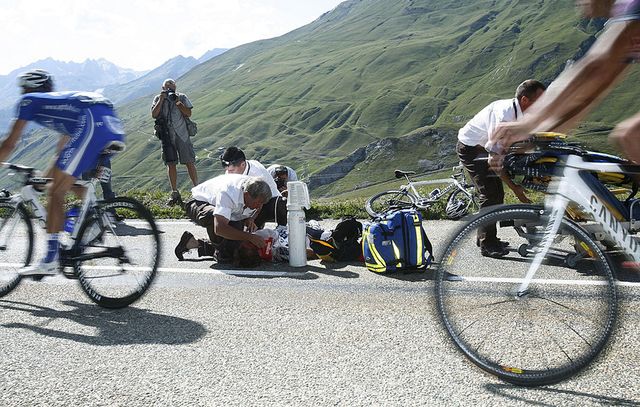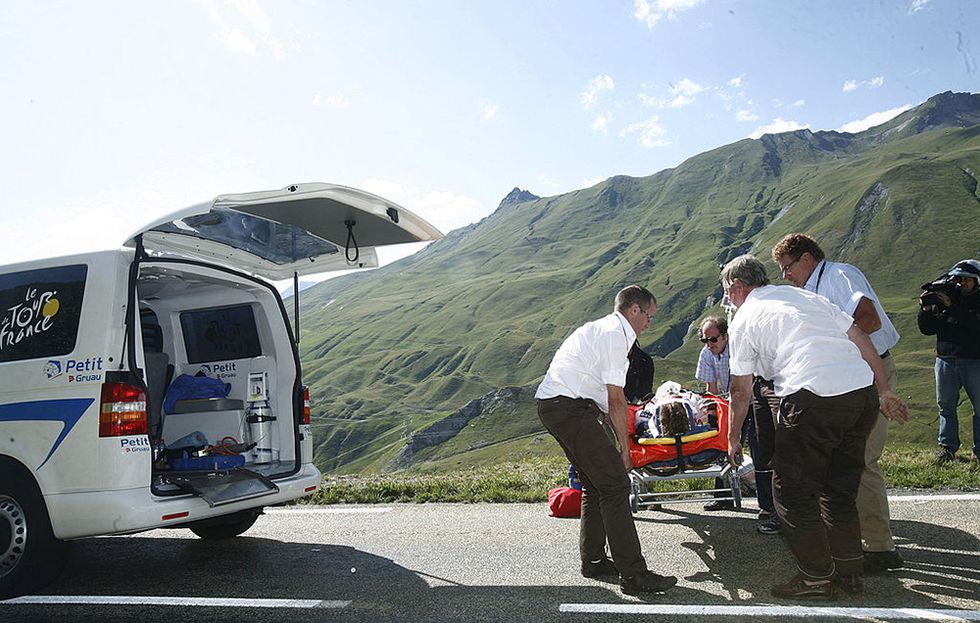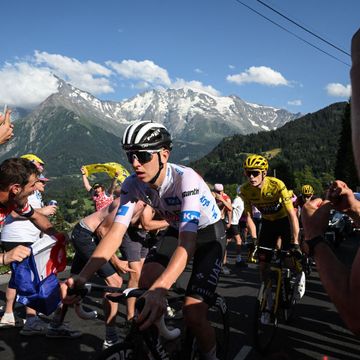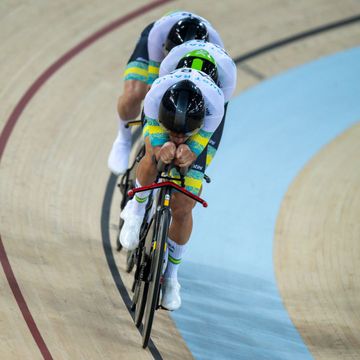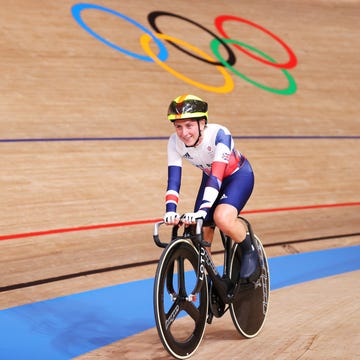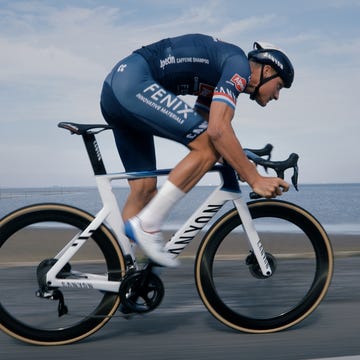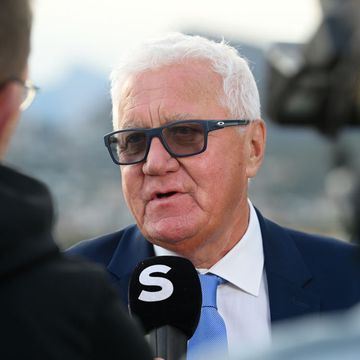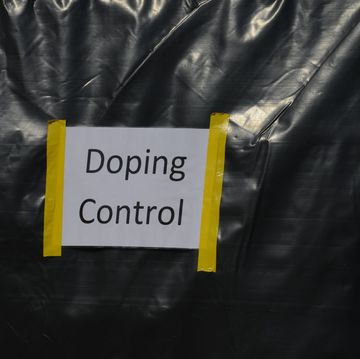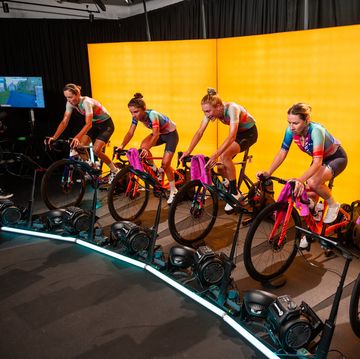(This is an excerpt from Shut Up, Legs: My Wild Ride On and Off the Bike, Jens Voigt's new autobiography written with James Startt. The book spans his entire cycling career, from his early days on the bike to breaking the hour record. Below is Jens' story of his crash in the Alps during the 2009 Tour de France, and his return to racing after his recovery.)
If I had one weakness throughout my career, it was descending. And it resulted in two of my worst crashes.
Early on in my career, I was okay with going down hills at 100 kilometers per hour with just a foam helmet on my head and a nylon jersey on my shoulders. I never dropped anybody, but I wasn’t getting dropped, either. Yet over the years, I struggled to follow the speed of the downhills.
And as the crashes accumulated, my descending got worse. My worst crash without a doubt came in the 2009 Tour de France in the Alps. I have seen the pictures of me lying there on the road in a fetal position with blood streaming down from my head. Normally, that means a broken skull! And if I had landed a little differently that day, I could have ended up in a wheelchair or, even worse, I could have lost my life. It could have been really, really bad, with very little hope. Still today, it remains one of my most painful memories and something I hate to discuss. If you only knew how many times I’ve had to talk about it, how many times I’ve had to relive it.
RELATED: 7 Things EMTs Wish You Knew About Bike Crashes
“Hey, we could win this stage. If I ride good tempo on the front, we could catch the break and Andy or Frank could win the stage!” That must have been seconds before I crashed.
We were in the Alps on the final climb of the day, the Saint Bernard Pass, before dropping into Bourg Saint Maurice for the finish. Andy Schleck was in the white jersey and planned to attack Alberto Contador, who was in yellow. So at the beginning of the day, we came up with a game plan. It was one of those master plans, and we needed somebody to be in the early breakaway so he could drop back and help Andy when he attacked on the Saint Bernard. When Bjarne asked who wanted to commit to the early breakaway, he knew he only had to look at me once to get the answer he was looking for.
So that’s what I did. I got in the early break.
It wasn’t easy. As a matter of fact, I remember thinking, “Gee, maybe I am getting older!” But I got in the break. And once I heard Andy was leading the attacks on the Saint Bernard, I dropped from the lead group and timed it so that the leaders caught me on this section where the climb leveled out a bit so I could help take some good pulls. When the group of favorites came up to me, there were Andy, Alberto Contador, and Bradley Wiggins left. Frankie was just a bit off the pace with Lance Armstrong, and after taking a good pull, Andy asked me to go back and pull Frankie back up. And that’s exactly what I did. All of a sudden, I crested the summit with my two teammates. At that point, we were definitely in a good position, and I thought, “Hey, we could win this stage. If I ride good tempo on the front, we could catch the break and Andy or Frank could win the stage!”
RELATED: 5 Things You Need to Do After a Bike Crash
That must have been seconds before I crashed. I was pulling at the front, and Bjarne came on the radio and said, “Hey, Jens, you don’t have to do all the work here. Others can pull if they want to win the stage.” So I pulled off to go back to the team car and get a few fresh bottles for the boys. And that was my last memory!
Slowly, piece by piece, I started moving different body parts...
The next thing I remember was lying on my back, looking up at the ceiling of the ambulance. My first thought was, “How in the hell did I get here?” And then, of course, a half-second later, the pain set in. I was like, “Ouch! 1 + 1 = 2. Ambulance + pain = crash!” Then I realized that I couldn’t move because they had me strapped down to prevent me from moving. And then things got blurry again, and I must have blacked out.
Now, each day on the Tour, the race organizers designate three hospitals, one near the start, one midway through the stage, and one near the finish. But when we got to the hospital, they took one look at me and said, “No! We’re just a tiny country hospital. Get him a helicopter and get him to a major hospital.”
RELATED: How to Avoid Bike Crashes
The next thing I knew, I was being wheeled out of the hospital and toward a helicopter with its propellers already turning.
I next remember waking up on an operating table. A team of doctors was stitching together my left hand. Then, out of the corner of my eye, I noticed another team working on my face. And then I saw a third team disinfecting my right hand so they could stitch it together later. I just thought, “Hey! Why do you have to multiply the pain? Can’t you stitch one thing up after the other?” That said, I was feeling no pain at that point, because I was loaded up with painkillers.
Then I went out again, and the next thing I remember is waking up in my hospital bed at about 10:30 that night. It was the first time since the crash that I was lucid in any way. I went back over the day and the collection of scattered memories of the race, the helicopter, and the operation. And then I told myself, “Okay, get yourself together!” And slowly, piece by piece, I started moving different body parts. First, I moved my left hand. “Okay, I can feel that.” Then I moved the right hand. “Okay, I can move that.” Then I was like, “Should I move my legs? Do I still have them?” I really didn’t know. It was scary. I just didn’t have any memory or knowledge of how much damage I had collected.
RELATED: Jens Voigt's Tour Notes
Finally, I moved my leg. It was painful, but I moved it. And I could feel my toes. Then I forced myself to raise my arms. That hurt a lot, too. But at least after that very painful process, I understood that nothing was broken beyond repair. And from that point on, it was just a matter of time before I was back.
So then I thought, “Okay, I’ve got to call the family.” So I pushed the button and called for a nurse to bring me a phone. I knew that the team had already called Stephanie, but I wanted to talk to her just to say, “Look, I’m okay!”
I was committed to the idea that I was not going to let this crash, however bad it was, end my career.
When I called her, I understood from what Stephanie was saying that the media was asking questions and reporting different things. As a matter of fact, some commentator even said, “It looks like Jens’s chances to see the next morning are about 50-50!” So Stephanie was just in shock.
I said, “Listen, honey, it’s going to be okay. I know your name, and I know we’re married. I know we have five kids, and I know all their names and birthdays. I’m okay. I’m really badly damaged. But there’s nothing that won’t be okay. I just need time.”
And then I started my long, slow journey back to competitive racing. Once I was back in Germany, I had appointments just about every day, healing and rehabilitating. But while the crash looked really bad, I came out of it pretty quickly.
Two weeks later, I was walking again. And if you can believe it, by the end of the season, I was lined up for the Tour of Missouri. I was committed to the idea that I was not going to let this crash, however bad it was, end my career. I really didn’t want to be the rider who was remembered for ending his career in a bad crash.
Jens Voigt went on to race through the 2014 season.

Jens Voigt is a German former professional road bicycle racer for several teams, the last one being UCI ProTeam Trek Factory Racing. Voigt has worn the yellow jersey of the Tour de France twice. His career achievements include winning the Critérium International a record-tying five times and a number of 1-week stage races, as well as two Tour de France stage victories. In September 2014, he set a new hour record. He lives in Berlin.
About Shut Up, Legs!
Voigt isn’t a superstar in the traditional sense of the word. Although he won three stages of the Tour De France―and wore the yellow jersey twice―Voigt never claimed an overall victory. He became a star because he embodies qualities that go beyond winning and losing: sacrifice, selflessness, reliability, and devotion. European and American crowds were drawn to his aggressive riding style, outgoing nature, and refreshing realness.
Voigt adopted a tireless work ethic that he carried throughout his career. In Shut Up, Legs! (a legendary Jensism), Voigt reflects upon his childhood in East Germany, juggling life as a professional cyclist and a father of six, and how he remained competitive without doping. Shut Up, Legs! offers a rare glimpse inside his heart and mind.
Buy the Book:
Amazon | Barnes & Noble | Books-a-Million | Indiebound | iBooks
